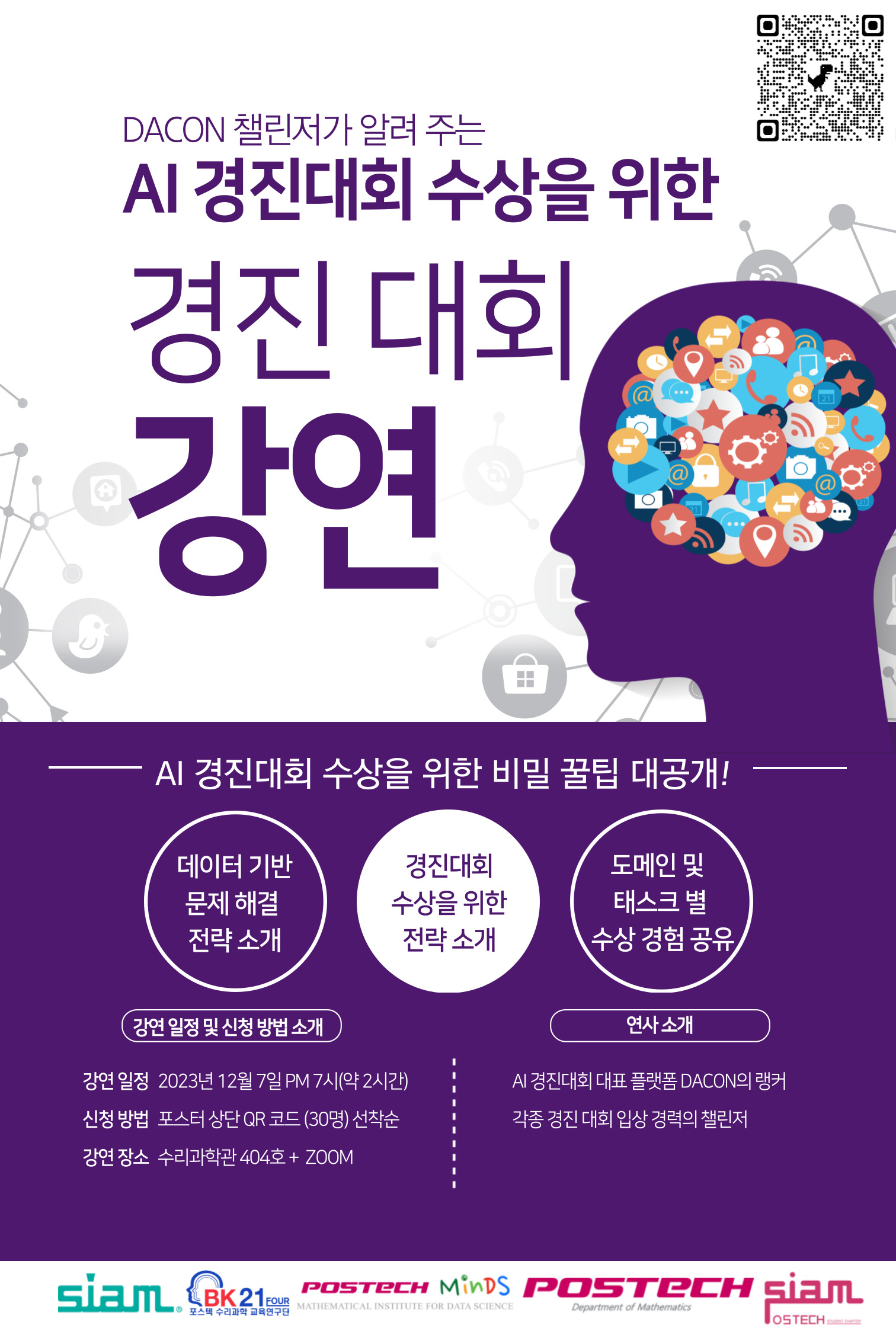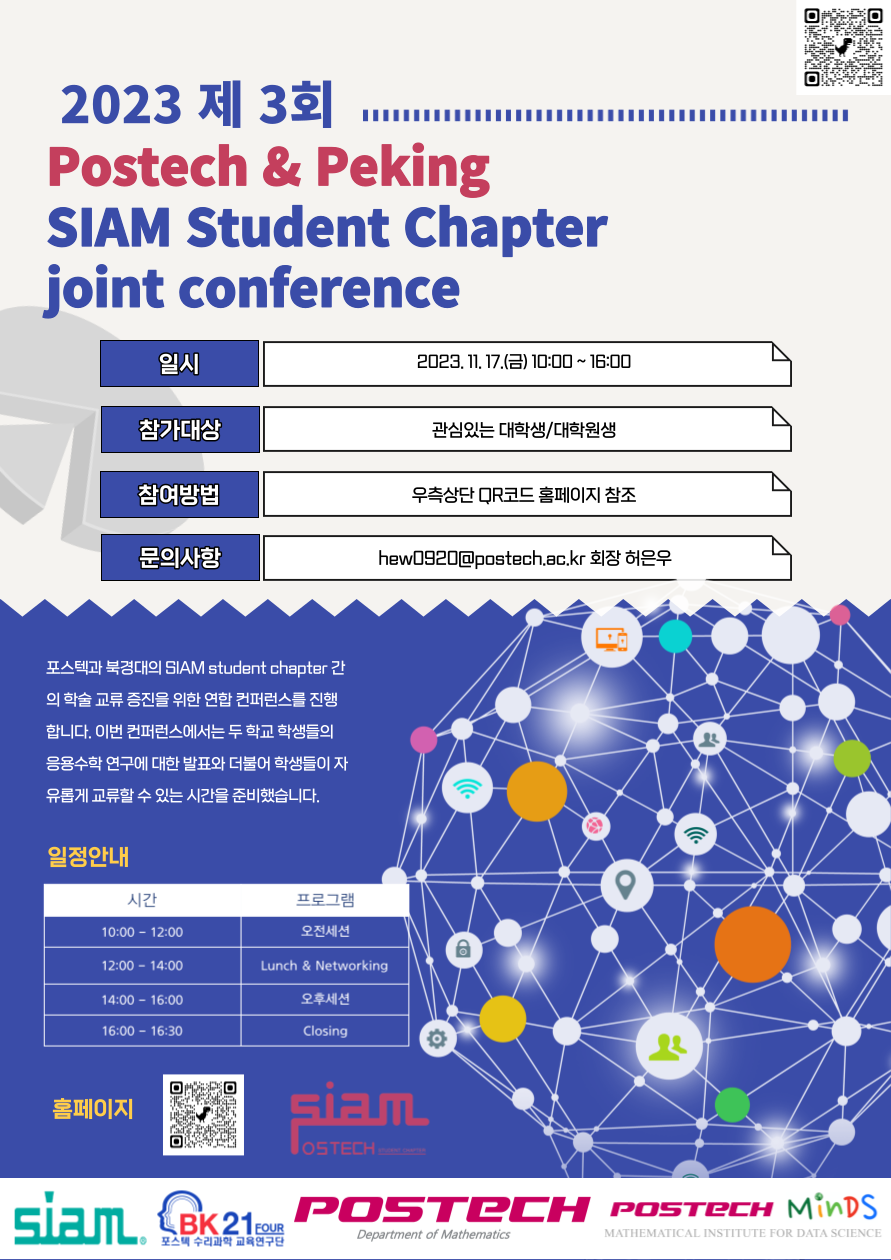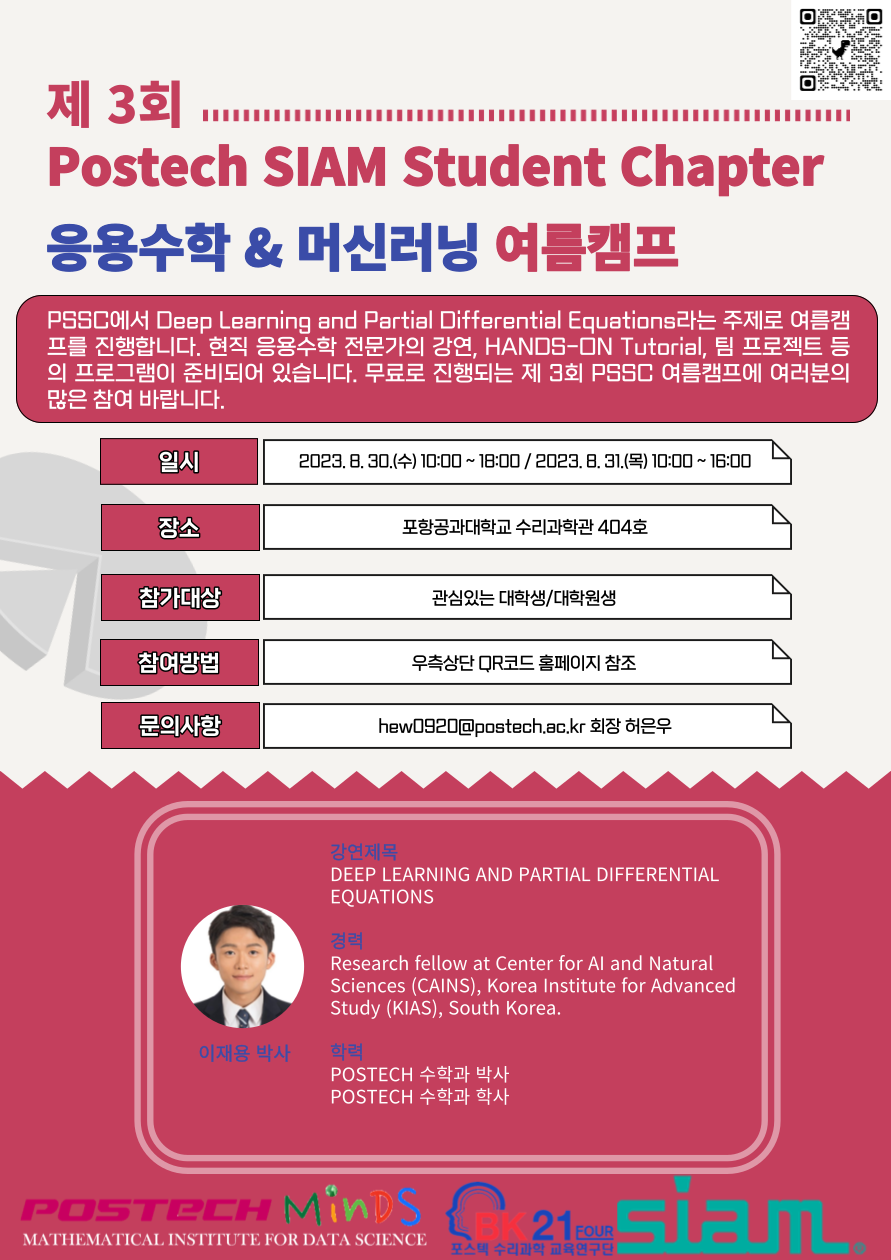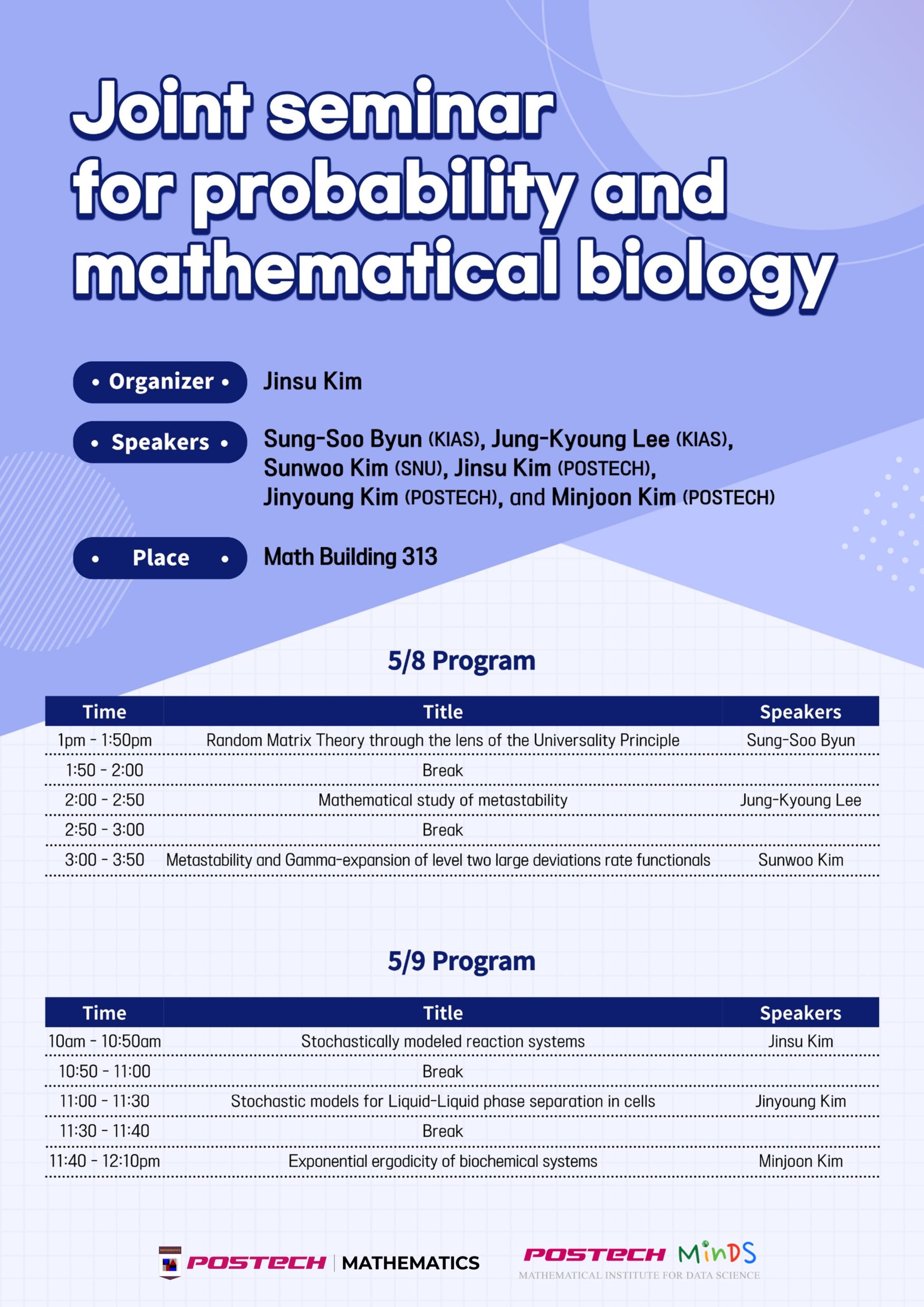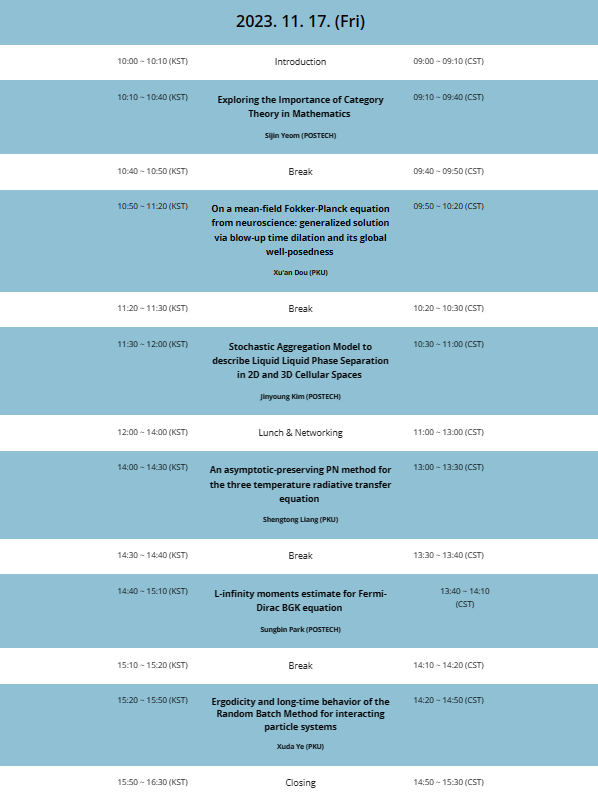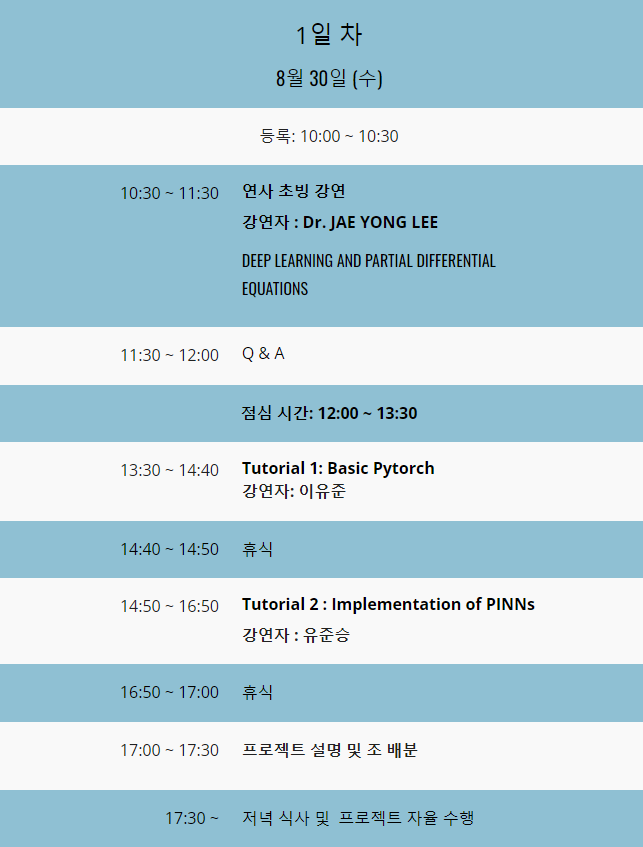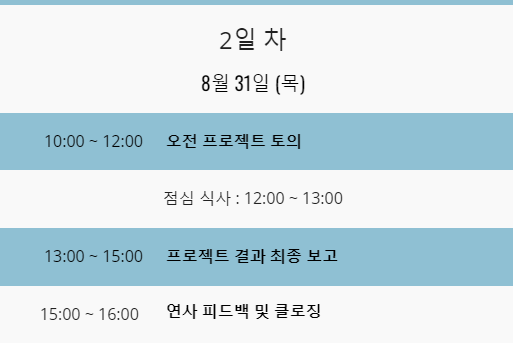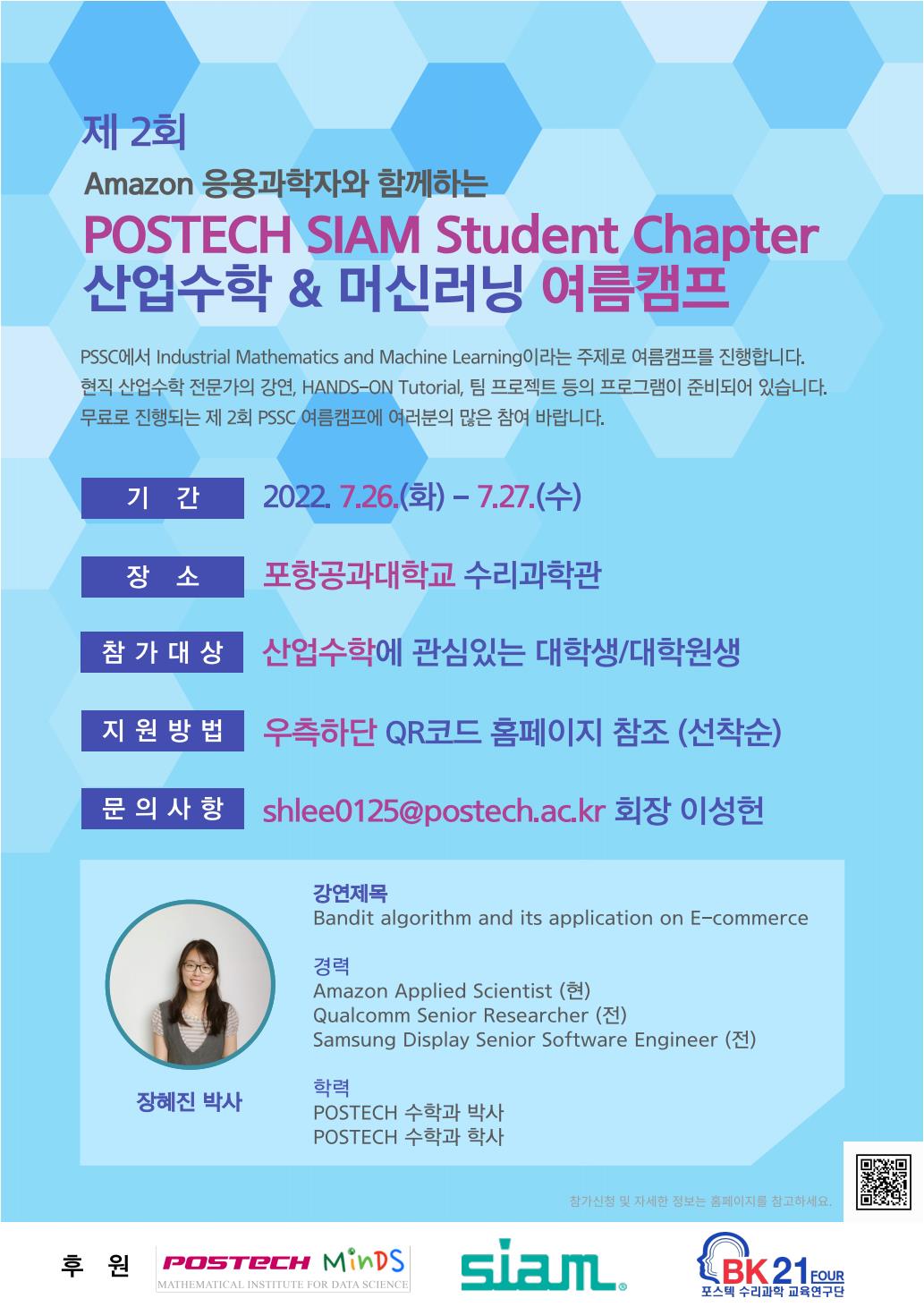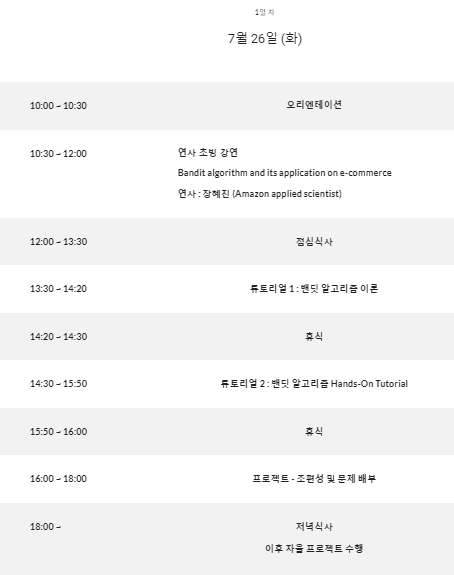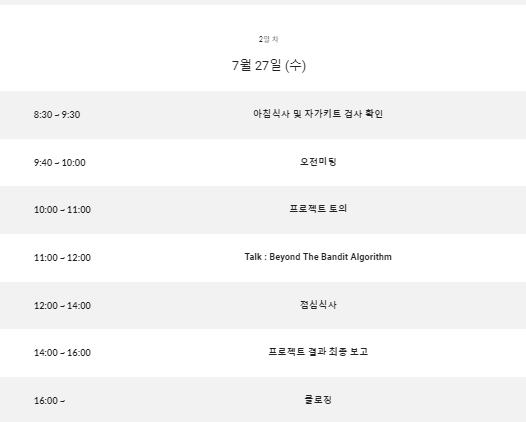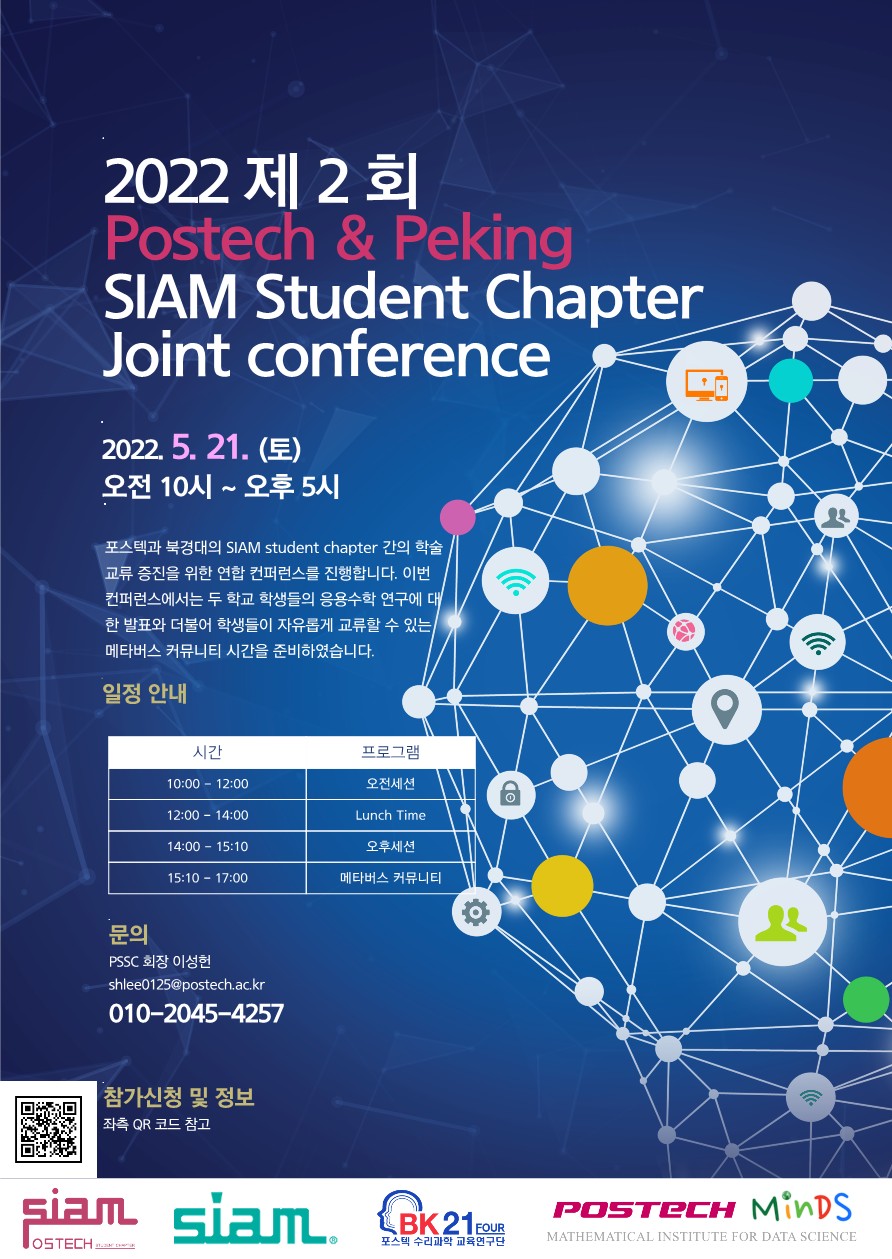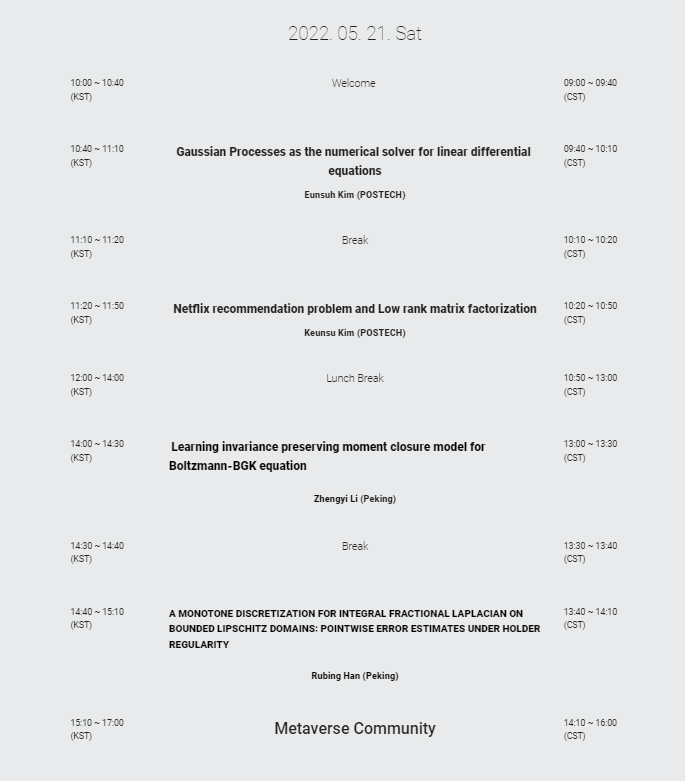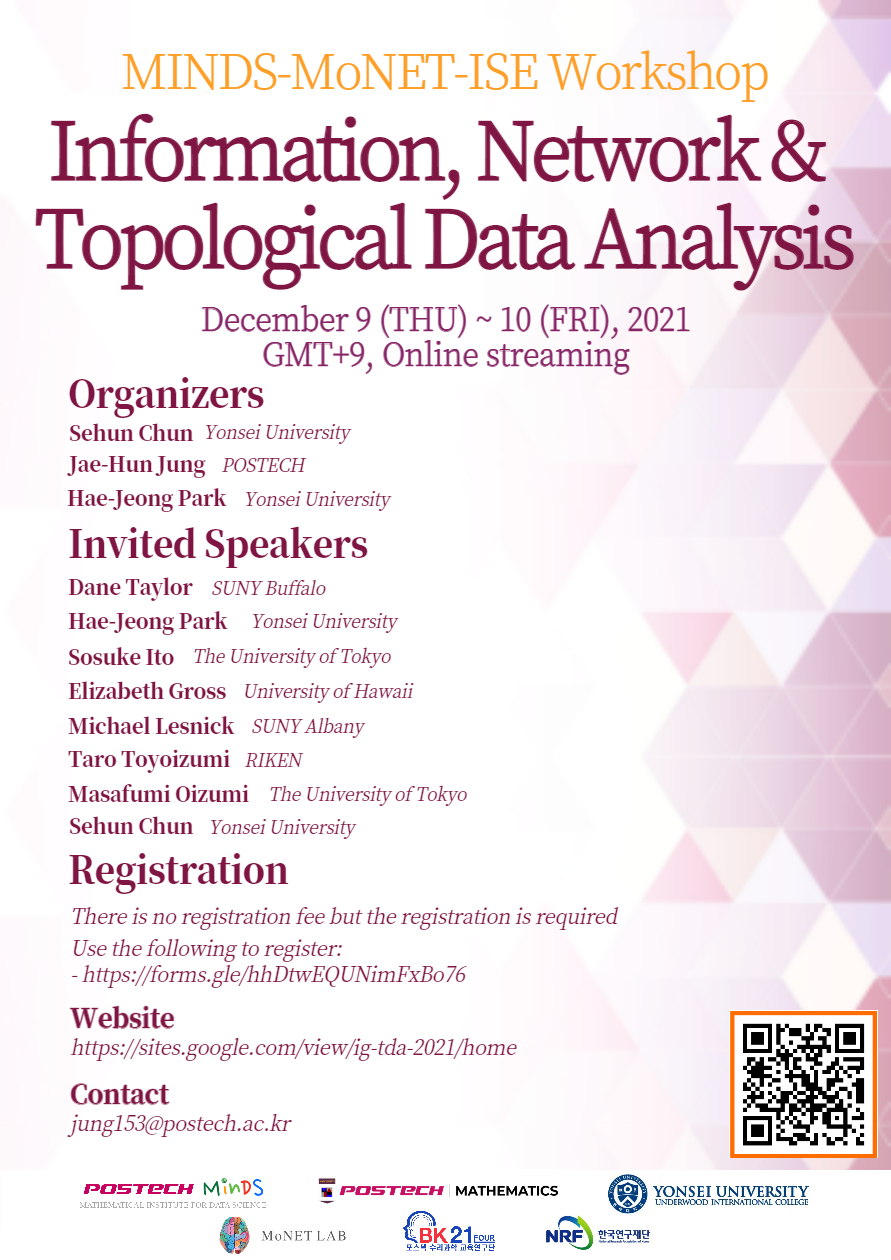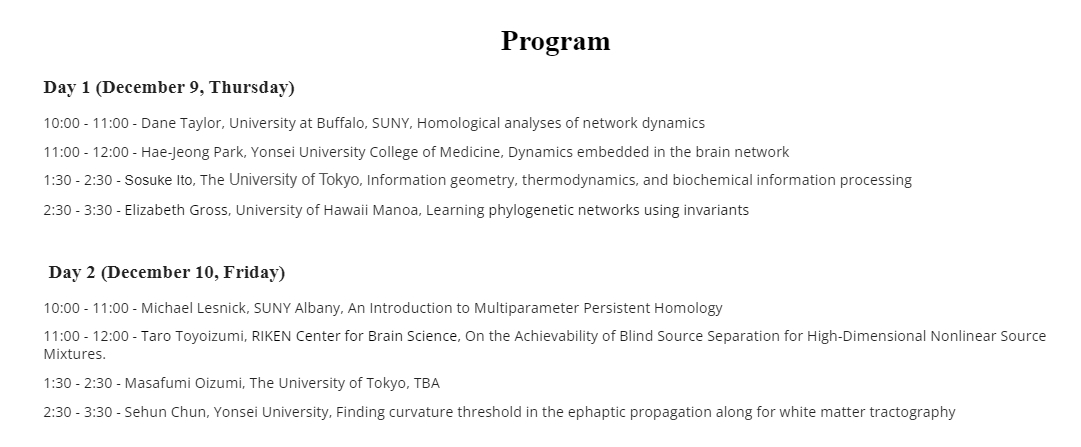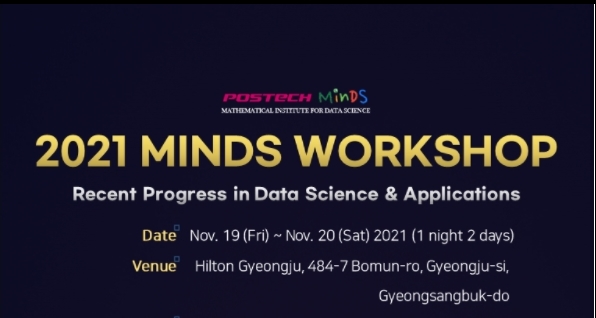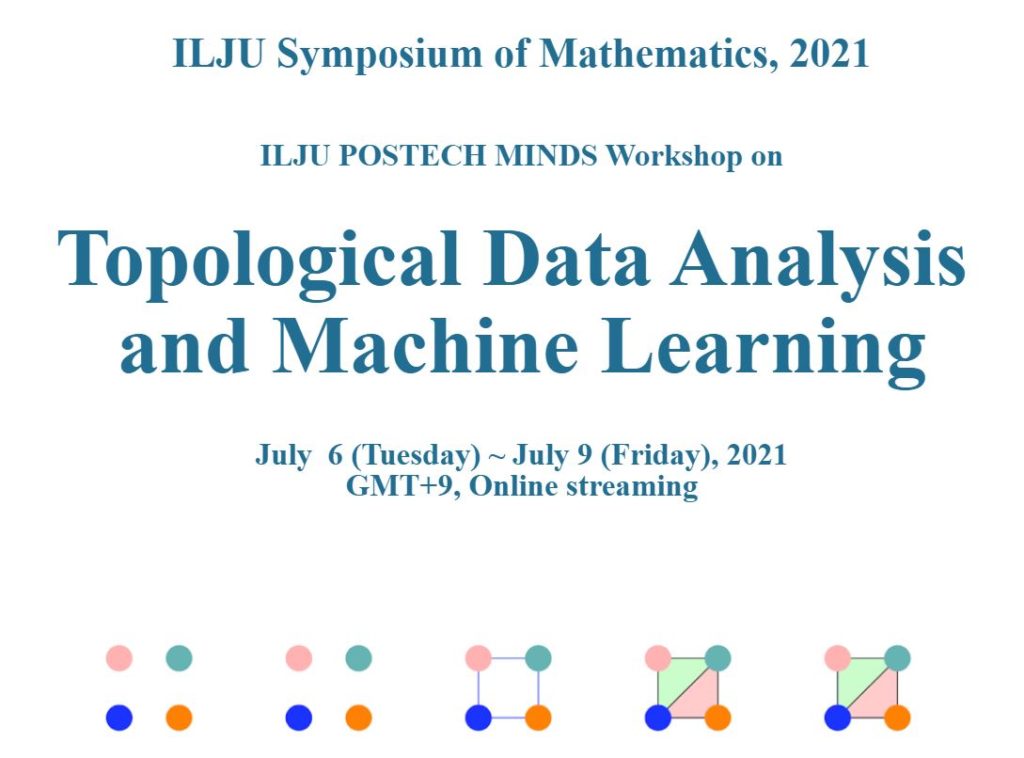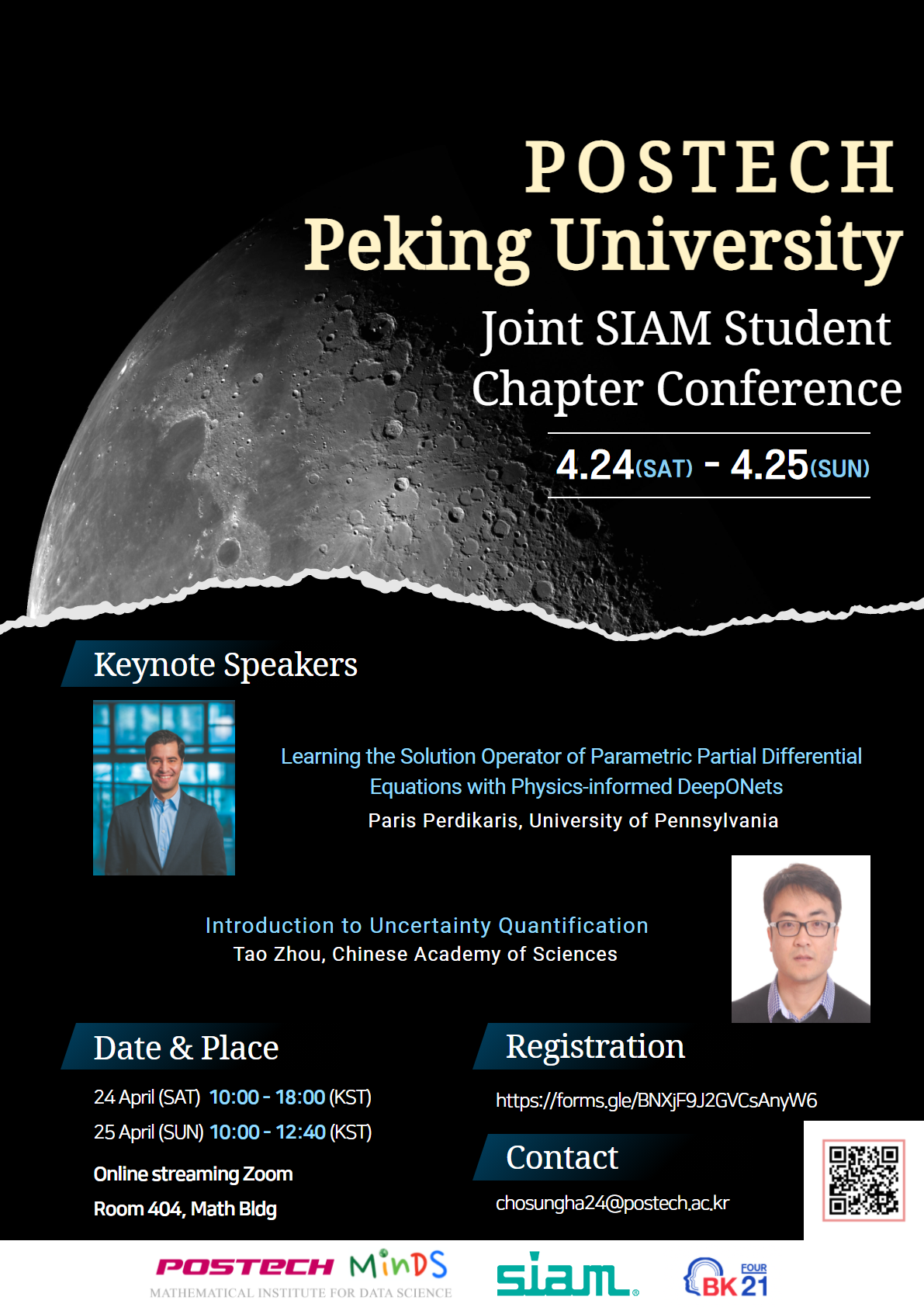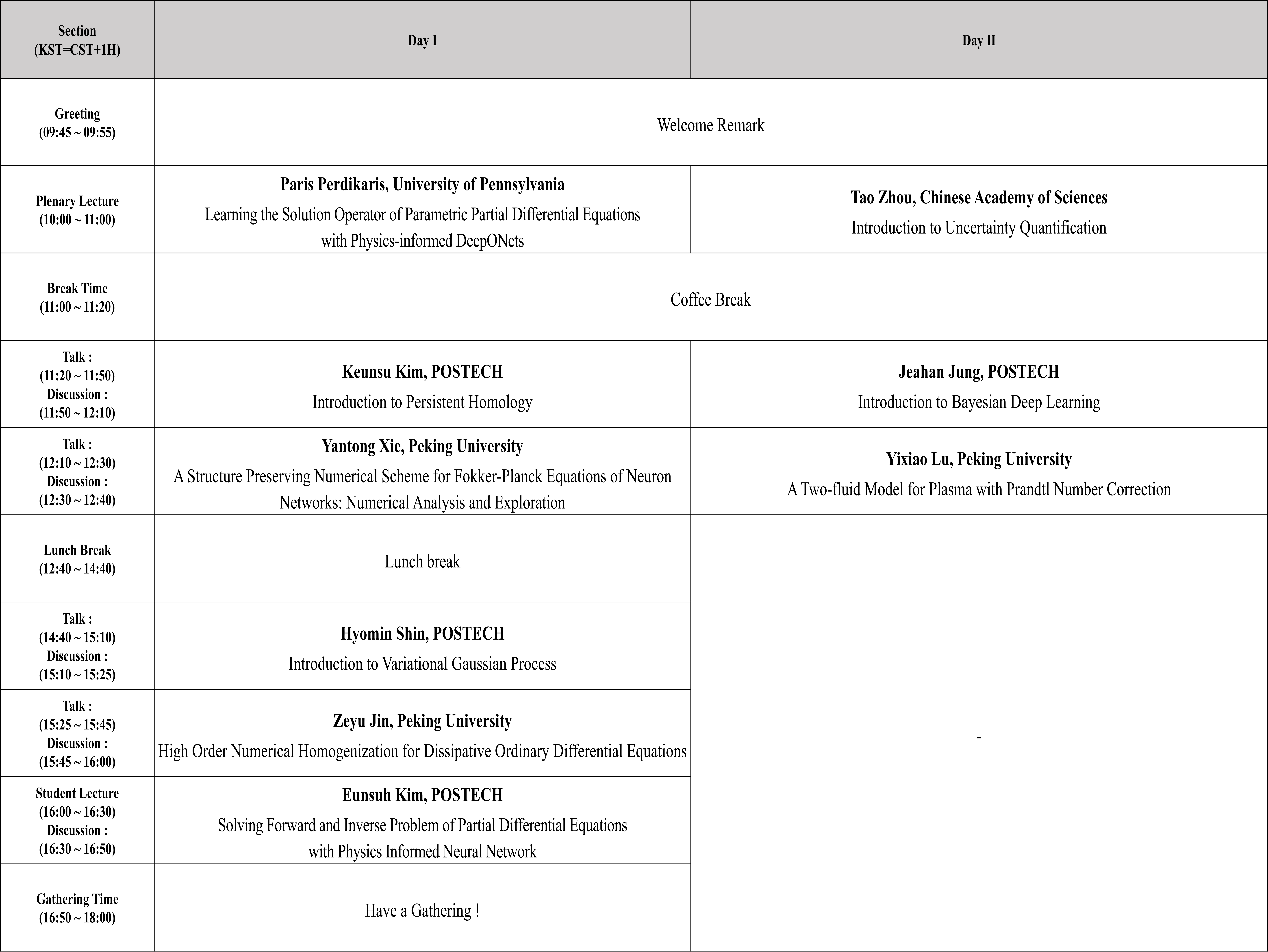Welcome to MINDS!
Established in 2020, POSTECH Mathematical Institute for Data Science (MINDS) is the community of researchers in the areas of fundamental data science, machine learning, artificial intelligence, scientific computing, and humanitarian data science. MINDS mission is to provide a platform for collaboration among researchers and to provide various opportunities for students in data science. MINDS also aims to use our data science research to serve our local and global communities pursuing humanitarian data science.
News
🌟 DACON Ranker Special Lecture: Winning Strategies for AI Competitions 🌟
2023.11.30
3nd POSTECH&Peking SIAM Student Chapter Joint Conference
2023.11.01
2023 PSSC Summer Camp
2023.10.04
[POSTECH(포항공과대학교) 수리 데이터과학 연구소 연구계약직 공고]-상시모집
2023.07.25
[POSTECH(포항공과대학교) 수리 데이터과학 연구소 연구계약직 공고]
2023.07.14
[POSTECH(포항공과대학교) 수리 데이터과학 연구소 연구교수 채용 공고]
2023.06.12
Seminar | Joint seminar for probability and mathematical biology
2023.05.02
[POSTECH(포항공과대학교) 수리 데이터과학 연구소 연구계약직 공고]
2023.02.15
Upcoming Events
Schedule
MINDS SEMINAR
MINDS Seminar Series | Oh-Kyoung Kwon (KISTI) - INTRODUCTION OF GPU COMPUTING : Definition, Evolution, Architecture, and Programming
MINDS SEMINAR
period : 2024-11-05 ~ 2024-11-05
time : 15:30:00 ~ 16:15:00
개최 장소 : Math Bldg 208 & Online streaming (Zoom)
Topic : INTRODUCTION OF GPU COMPUTING : Definition, Evolution, Architecture, and Programming
개요
| Date | 2024-11-05 ~ 2024-11-05 | Time | 15:30:00 ~ 16:15:00 |
| Speaker | Oh-Kyoung Kwon | Affiliation | KISTI |
| Place | Math Bldg 208 & Online streaming (Zoom) | Streaming link | ID : 688 896 1076 / PW : 54321 |
| Topic | INTRODUCTION OF GPU COMPUTING : Definition, Evolution, Architecture, and Programming | ||
| Contents | GPU computing, or Graphics Processing Unit computing, refers to the use of graphics processing units for general-purpose computing tasks, extending their original function of rendering graphics. This presentation explores the multifaceted domain of GPU computing, defining its role and highlighting its recent surge in importance, not only in High-Performance Computing (HPC) but also in Artificial Intelligence (AI) computations. We briefly delve into the historical backdrop of GPU computing and compare GPU architecture to CPU architecture. In the GPU architecture discussion, we emphasize key aspects such as simplified core functions, a multitude of cores, efficient context switching, the importance of registries, and high memory bandwidth. Additionally, we provide concise explanations of popular GPU programming techniques like CUDA[1], OpenACC[2], and HIP[3]. GPU computing traces its roots to the late 1990s when GPUs began to exhibit significant parallel processing capabilities. This evolution culminated in the introduction of CUDA by NVIDIA in 2007, revolutionizing the GPU computing landscape. In GPU architecture, core functionality is streamlined, and the number of cores is substantially higher than in CPUs. This architectural divergence enables efficient parallel processing. Key architectural features are as follows: Firstly, GPUs feature thousands of simpler cores optimized for parallel tasks, facilitating massive parallelism. Secondly, swift context switching is vital for GPU efficiency, and numerous registries support this. Thirdly, GPUs employ a multitude of registers for data storage, enabling high-throughput data processing. Lastly, GPUs depend on high-speed memory access to sustain their voracious computational appetite. By the end of this presentation, you will have gained a comprehensive understanding of GPU computing, its historical context, architectural distinctions compared to CPUs, and insights into popular GPU programming techniques that enable its wide-ranging applications in modern computing. | ||
POSTECH SIAM Student Chapter
🌟 DACON Ranker Special Lecture: Winning Strategies for AI Competitions 🌟
2023 POSTECH & Peking SIAM Student Chapter Joint Conference
2023 PSSC Summer Camp
2022 PSSC Summer Camp
2022 POSTECH & Peking SIAM Student Chapter Joint Conference
MINDS-MoNET-ISE Workshop
Information, Network & Topological Data Analysis
2021 POSTECH MINDS WORKSHOP
Recent Progress in Data Science and Applications
- Nov. 19(Fri) ~ Nov. 20(Sat) 2021 (1 Night 2 Days)
- Workshop homepage
Fall 2021 Seminar Series
MINDS Seminar Series on Data Science, Machine Learning, and Scientific Computing
Every Tuesdays 05:00 PM
ILJU POSTECH MINDS Workshop on TDA and ML
July 6 ~ July 9
Registration is required (please register here)
